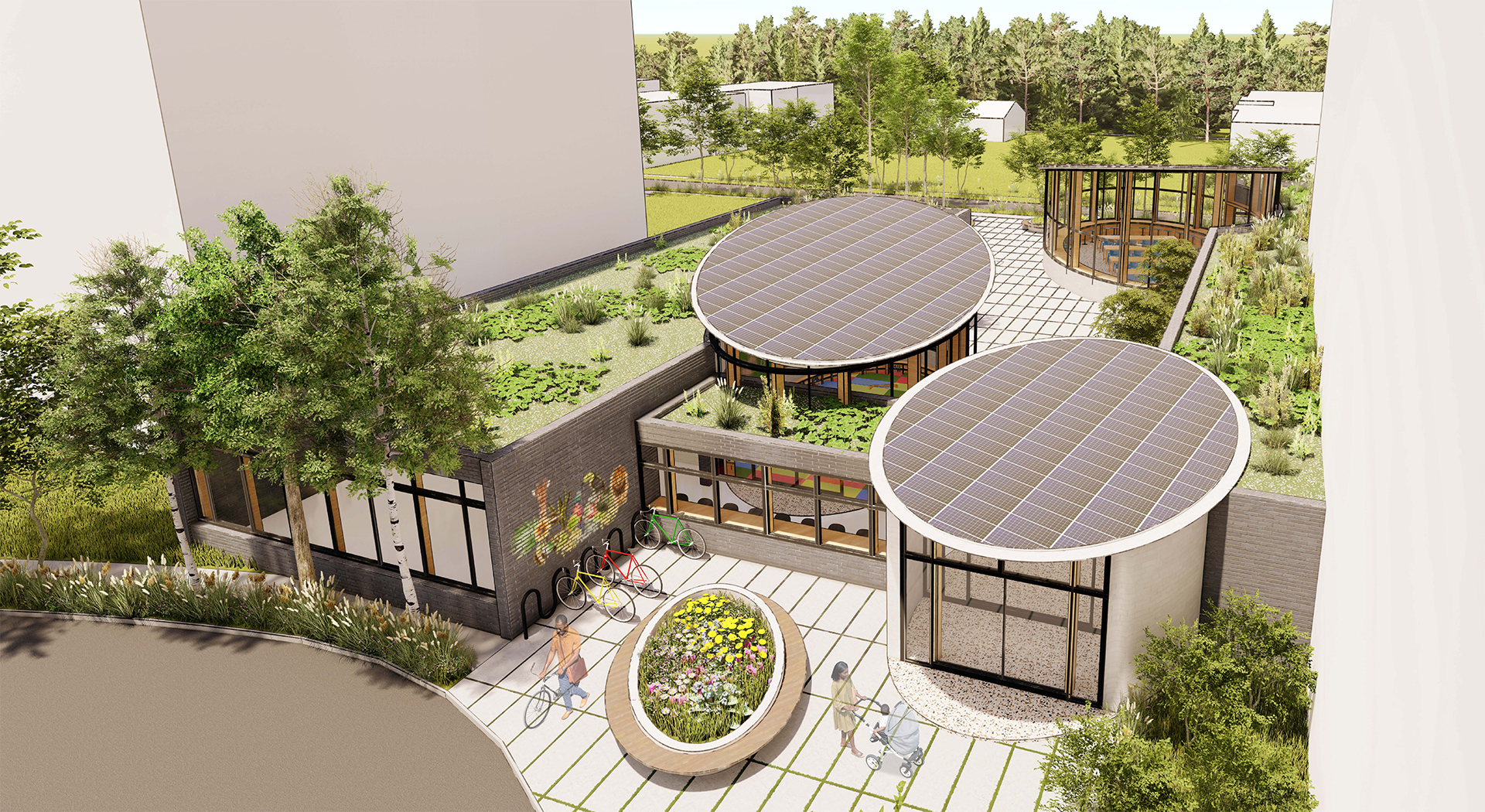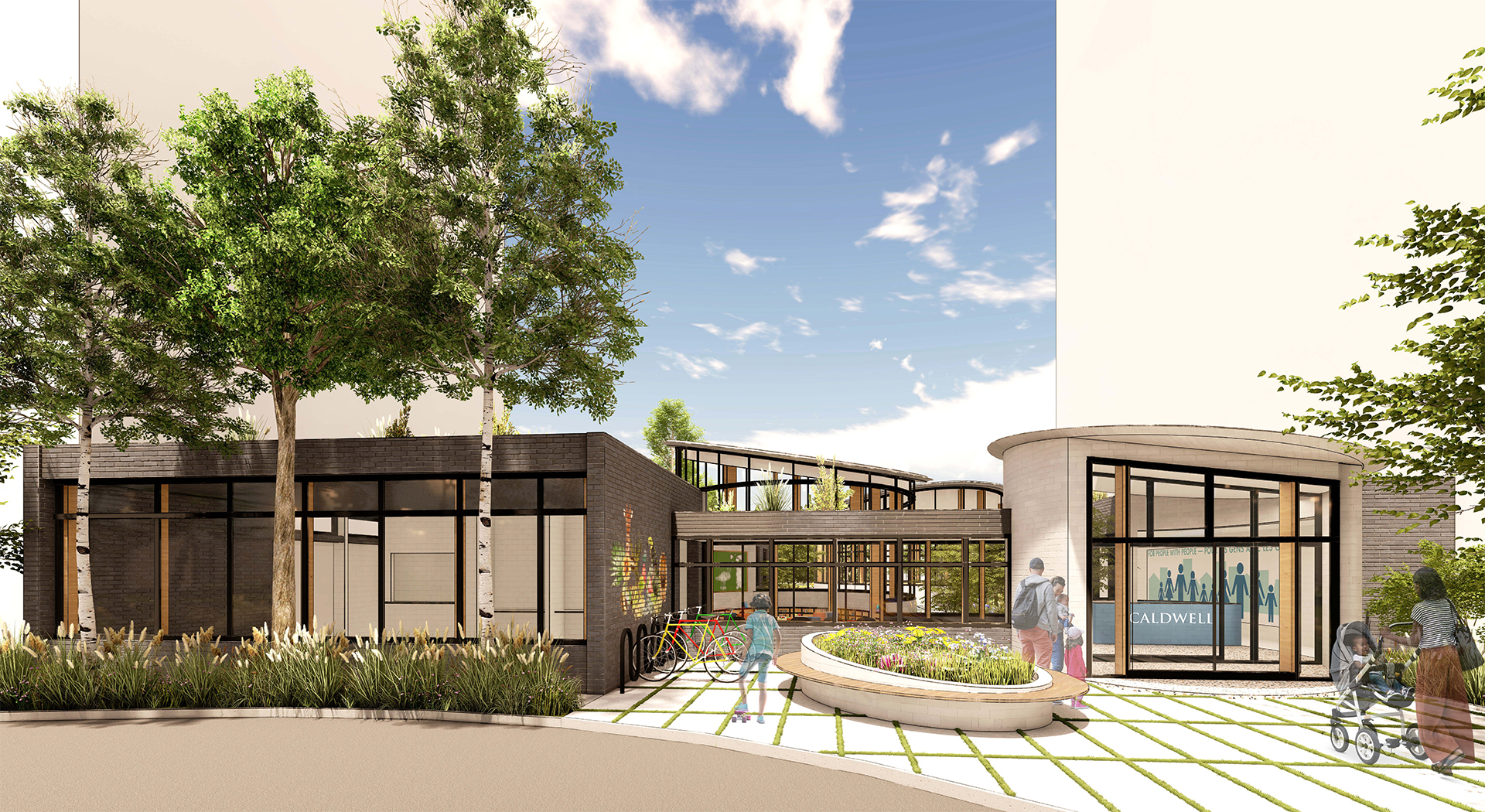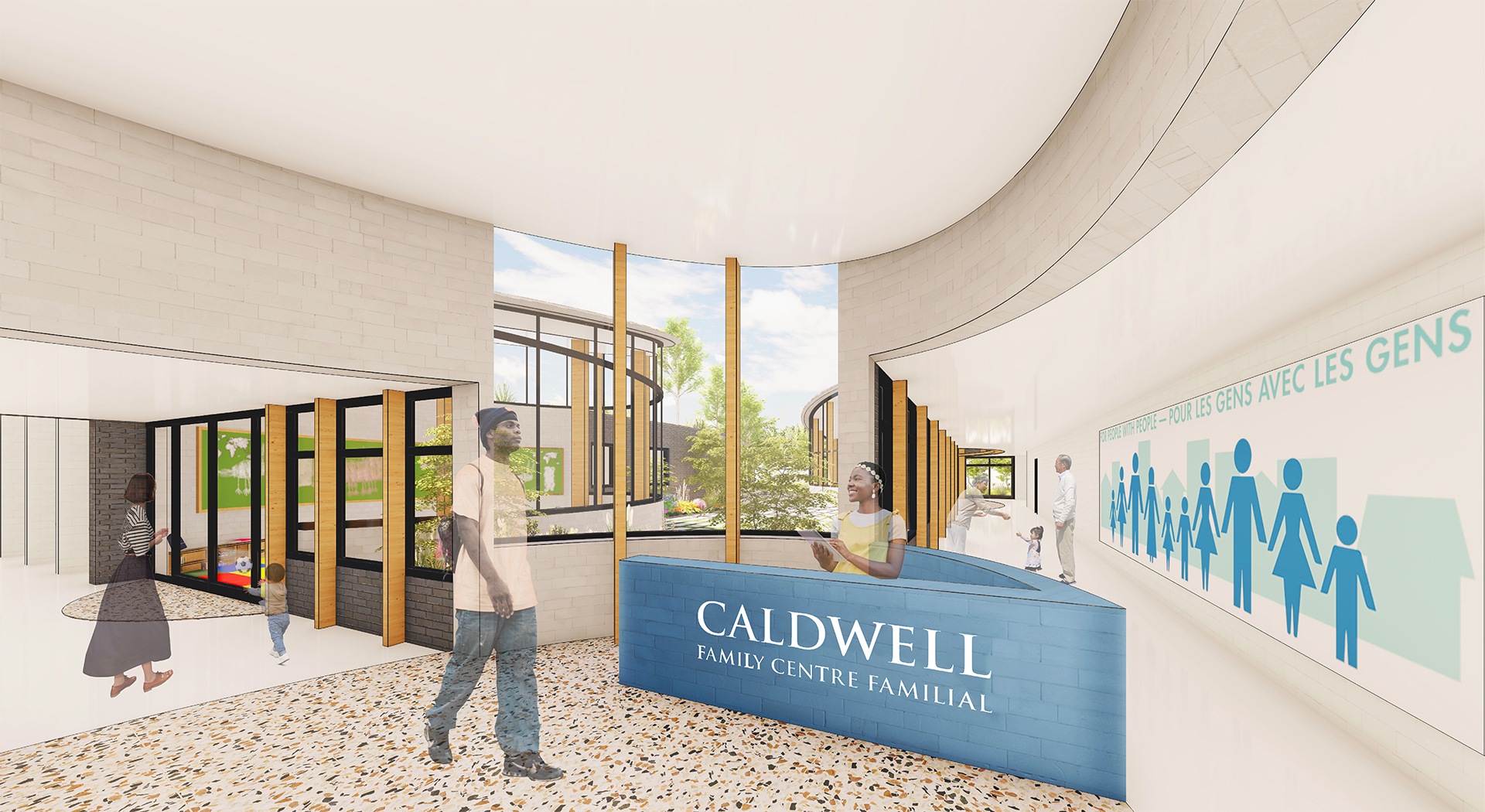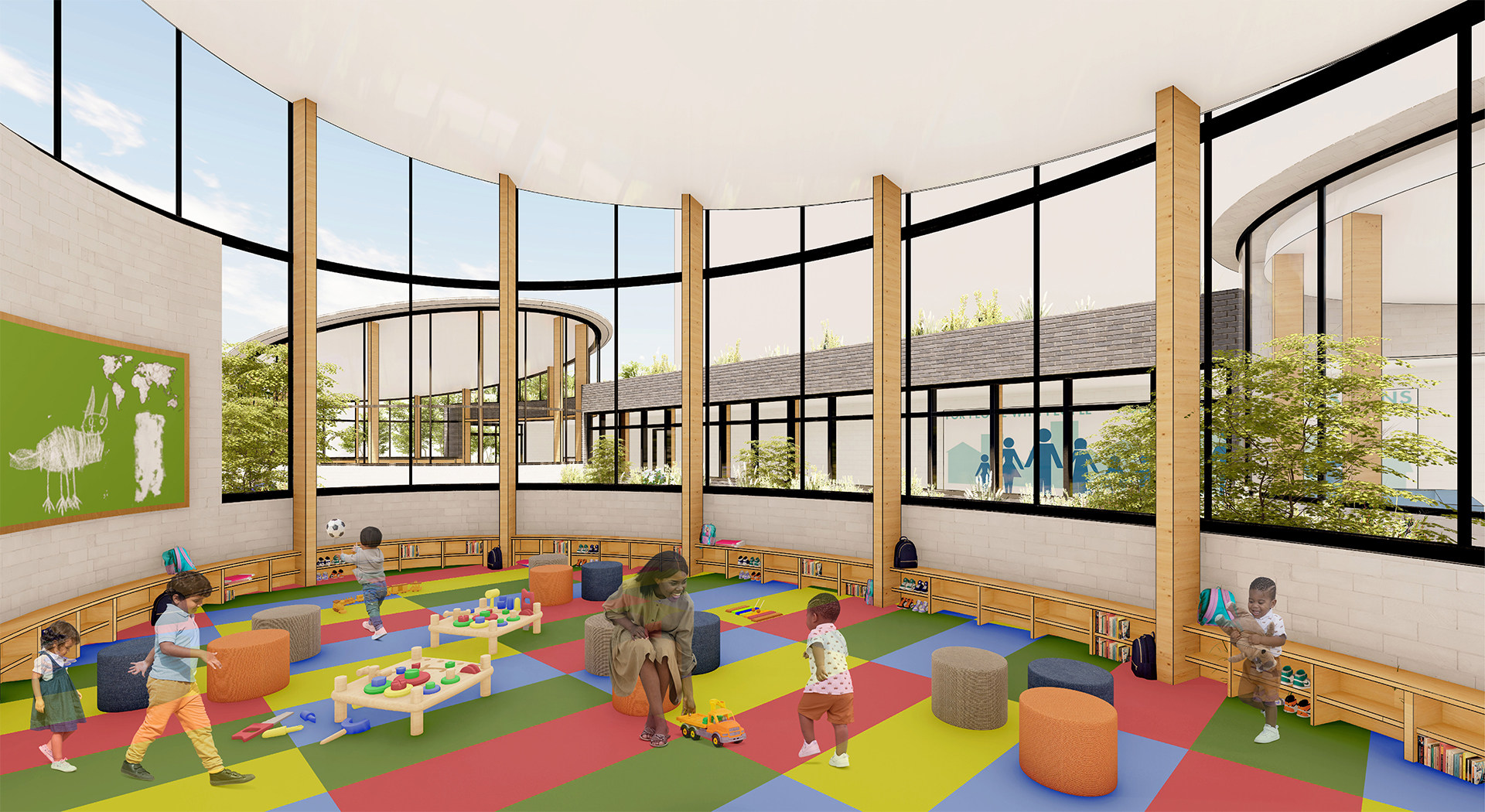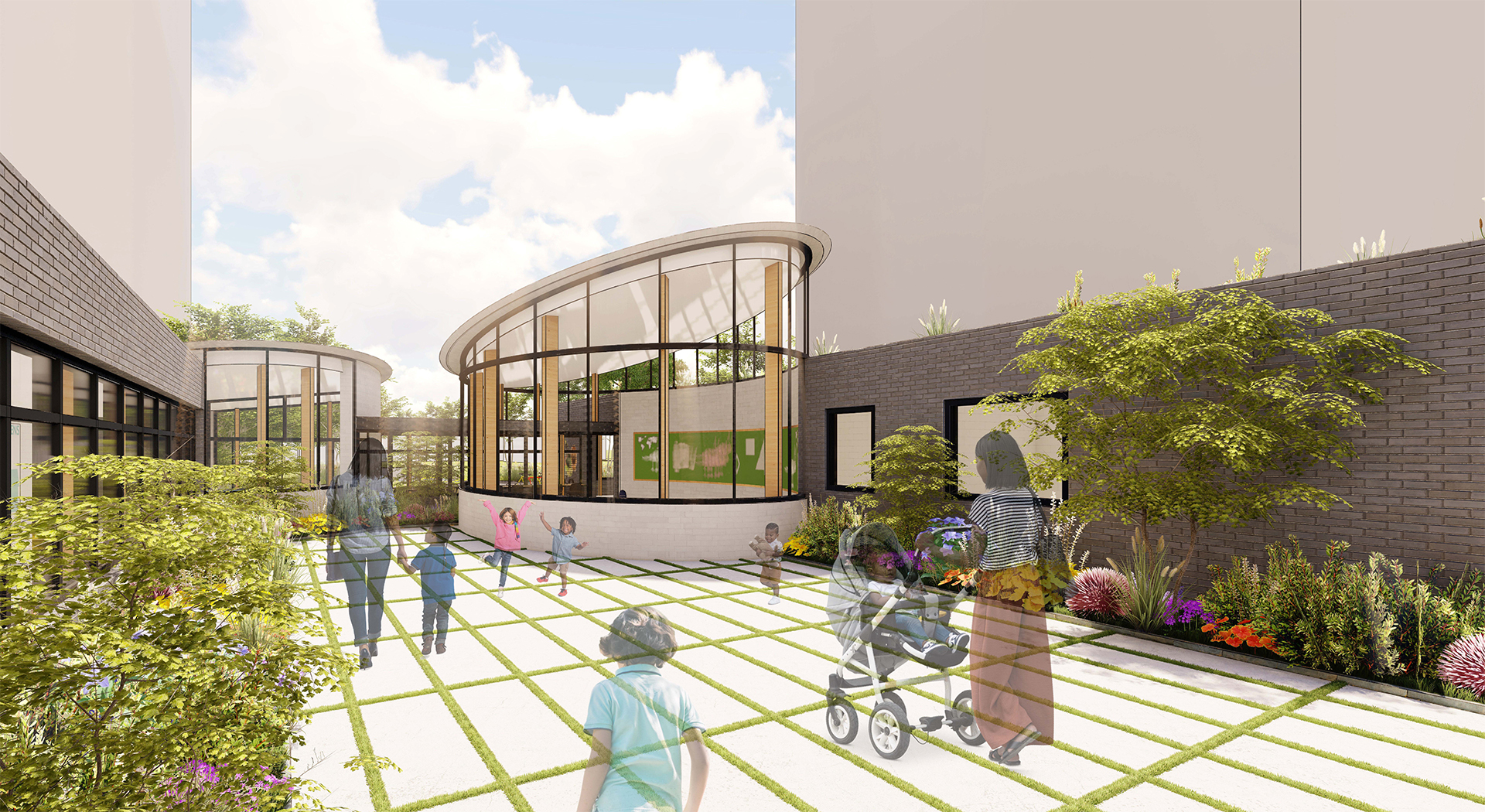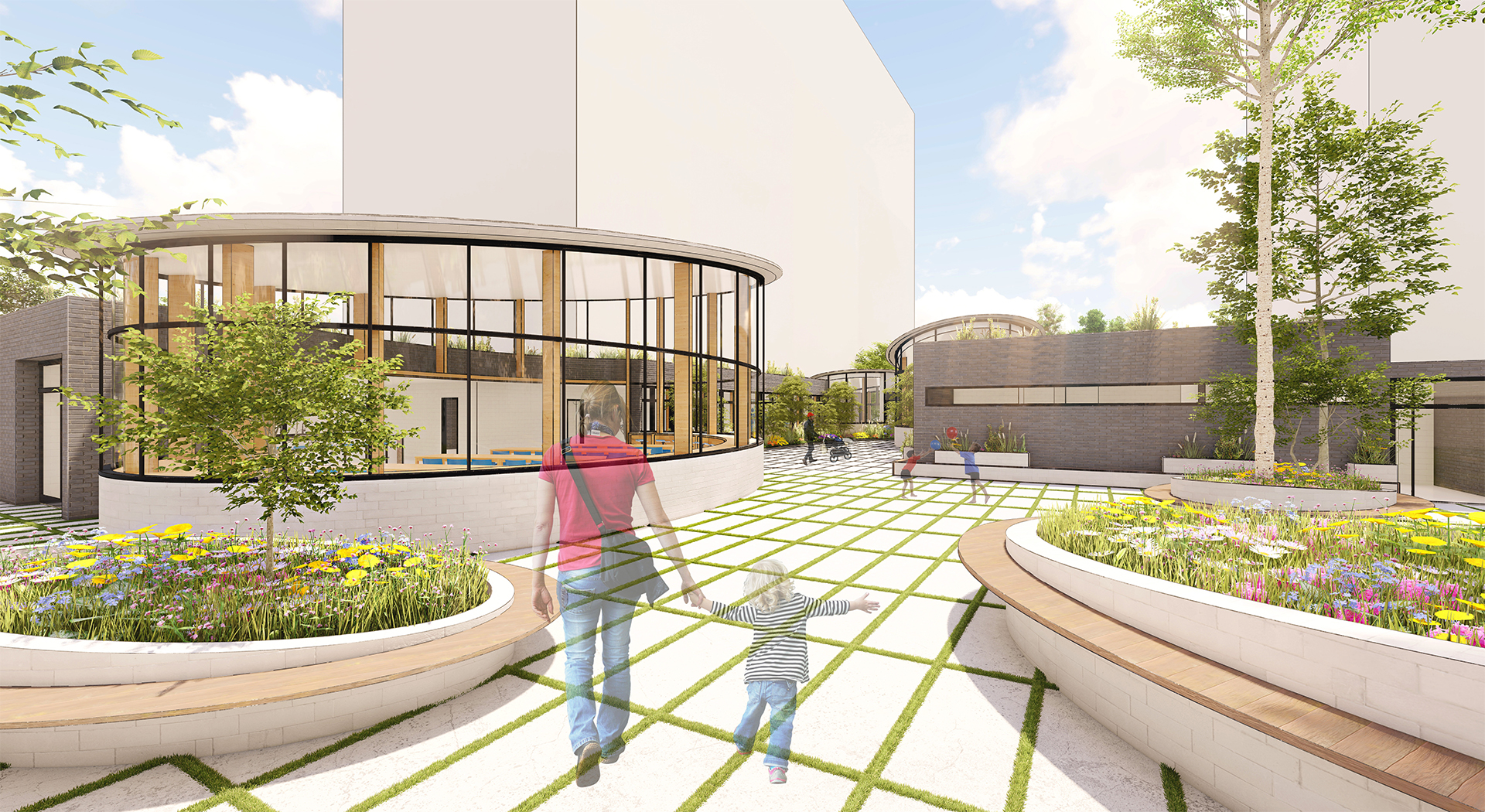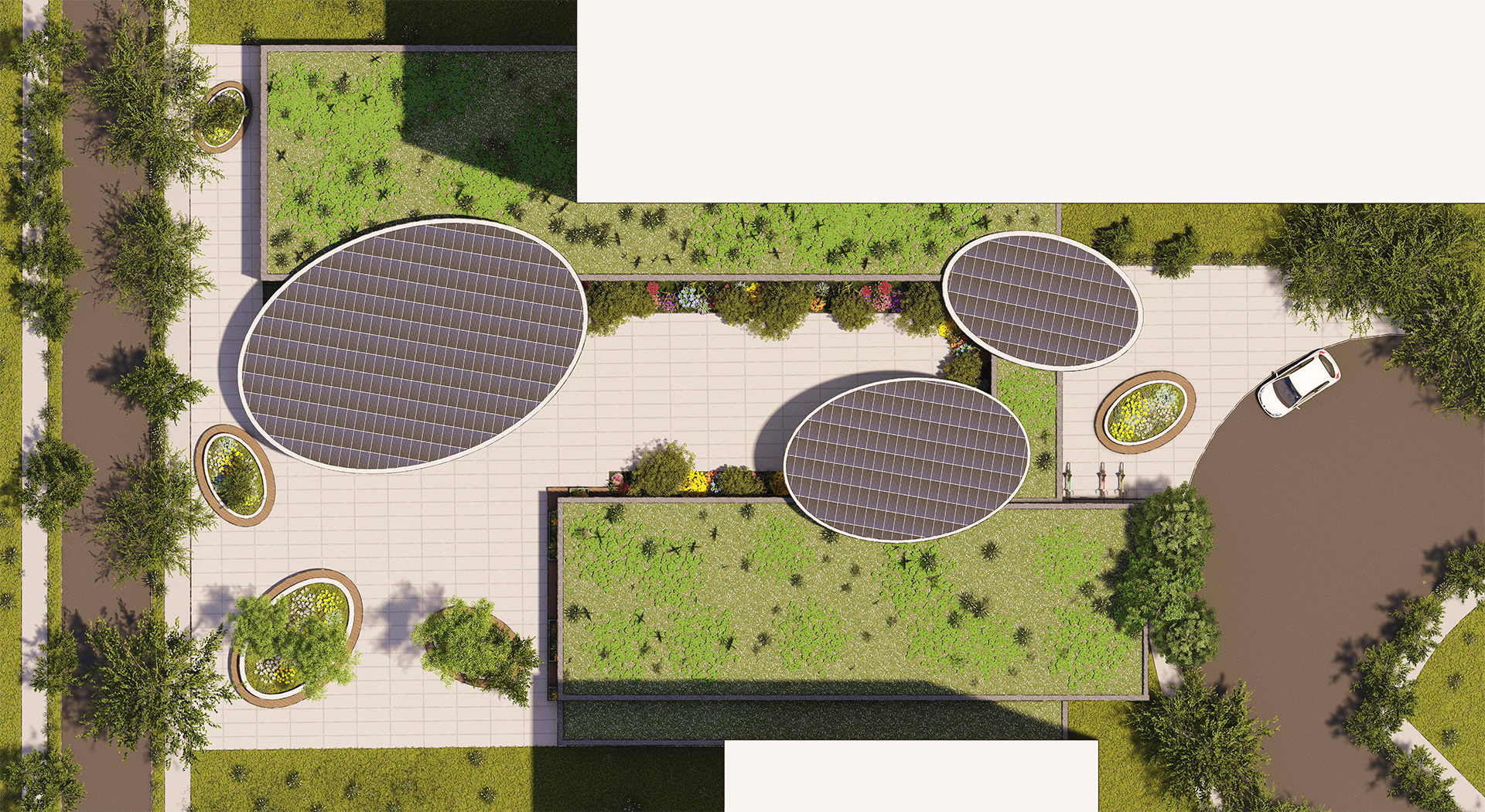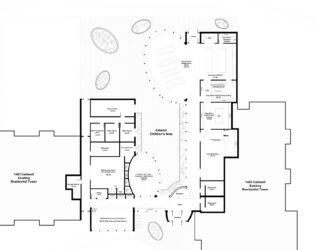Caldwell Family Centre (Proposed Design)
Project details
The new Caldwell Family Centre (CFC) concept design was done almost entirely pro bono by our office. Our team spent almost a year creating the designs after extensive consultation with the staff and volunteers of the CFC. Although construction for the project was paused by the federal government’s termination of potential funding, we’re ready to continue should it get the go-ahead. Through the COVID epidemic and recent cost of living increases it has become even more clear how urgently such a centre is needed. As we experience dynamic climate changes and increased demand on support services for our communities, food safety will be a priority for the Caldwell Community.
The mission of the Caldwell Family Centre is to reduce the impact of poverty in Ottawa. Currently, they are partially located in the Bellevue Community Centre in the Carlington neighbourhood and their Foodbank is now located temporarily in the City View United Church, about five kilometres away. They are desperately in need of a new location with, amongst other things, effective heating and cooling to help keep staff, volunteers and clients comfortable.
The new CFC design would make it easier for staff and volunteers to provide much-needed food programs, warm clothing, child care, and a satellite police station to help strengthen community ties. Expanded learning programs were originally planned, including reading and language lessons for immigrant adults and children to help people become more employable.
None of these things would be possible in the same capacity without the expanded and improved facility. Once constructed, the CFC would have enough room to combine all of the programs in one building. The proposed 10,000 SF facility would not only have a larger footprint but also an accessible layout, durable and low-maintenance construction, and vastly improved energy efficiency to reduce long-term costs.
Design Features for Better Program Delivery
The design includes two rectilinear and three ellipsoidal volumes, each of which houses a specific function: reception, dining, and childrens’ programs. Together, these structures surround and secure an exterior courtyard which serves as a children’s play area. The three main goals of each of the primary spaces would be to provide:
- Multifunctional spaces without overlapping circulation, so that contact can be limited should another pandemic arise.
- Access to fresh air and sunlight in all habitable areas.
- Maximised views that promote the activities inside to passersby and improve security.
The existing community centre is sited between two high-rise apartment buildings that contain subsidised rental units run by Ottawa Community Housing, which shelter hundreds of people who might make use of the CFC. Unfortunately, the community centre lacks a defined and inviting public entryway and has a forbidding appearance.
The new design addresses this problem by providing a clear entry, with direct sight-lines to the reception area, and to the childrens’ courtyard beyond. It also includes easy access for delivery vans at the back, just outside of the food donation sorting room. The surrounding spaces make healthy meal preparation easier for food programs as well as classes. A nearby multifunction room is configured for serving meals.

Sustainability and Long-term Cost Savings
Nonprofits face a constant battle for funding, and know that existing funding can disappear at any time. Controlling long-term costs like energy bills and building repairs and replacements therefore becomes an imperative. The cost management strategy for the new CFC design is to achieve long term savings and value by spending more on better materials during the initial construction phase. The design responds to this by including a number of sustainable building approaches, including use of durable materials, excellent energy efficiency, and even solar power generation.
Solar Panels
Solar panels on all three of the elliptical spaces — the reception, childrens’, and dining pavilions — will contribute to the facility’s energy supply. The roof angles of the pavilions are calibrated to maximise efficiency of photovoltaic cells.
Green Roof
Both rectangular pavilions will be planted with a green roof. This will mitigate interior heat gain in the summer months, help moderate the local heat island effect, and provide a more park-like view from the apartment balconies surrounding the CWC.
Courtyard Garden for Shade
In the childrens’ courtyard, a number of green areas are planned, including native trees, shrubs and grass. This will provide shade during the hot months for users and for the nearby pavilions.
Storm-proof Energy Efficient Windows
Storm-proof glass will help prevent the need for replacement in case of severe weather, exactly the time when the centre’s services would be most needed. With climate change, researchers are predicting increased severe weather events in Ottawa, including storms and tornadoes. The new, efficient windows will also reduce energy bills.
Energy Efficient HVAC System
While the planning hasn’t extended to the point of choosing a heating, ventilation and cooling (HVAC) system, a reasonably comfortable temperature is currently a pain point for the CFC. We recommend the installation of a geothermal heat pump system to provide a liveable indoor environment for staff, volunteers and clients. While a geothermal system would not be the cheapest option to install, it would dramatically lower energy costs over the long term so that more funds could be put towards client services.

